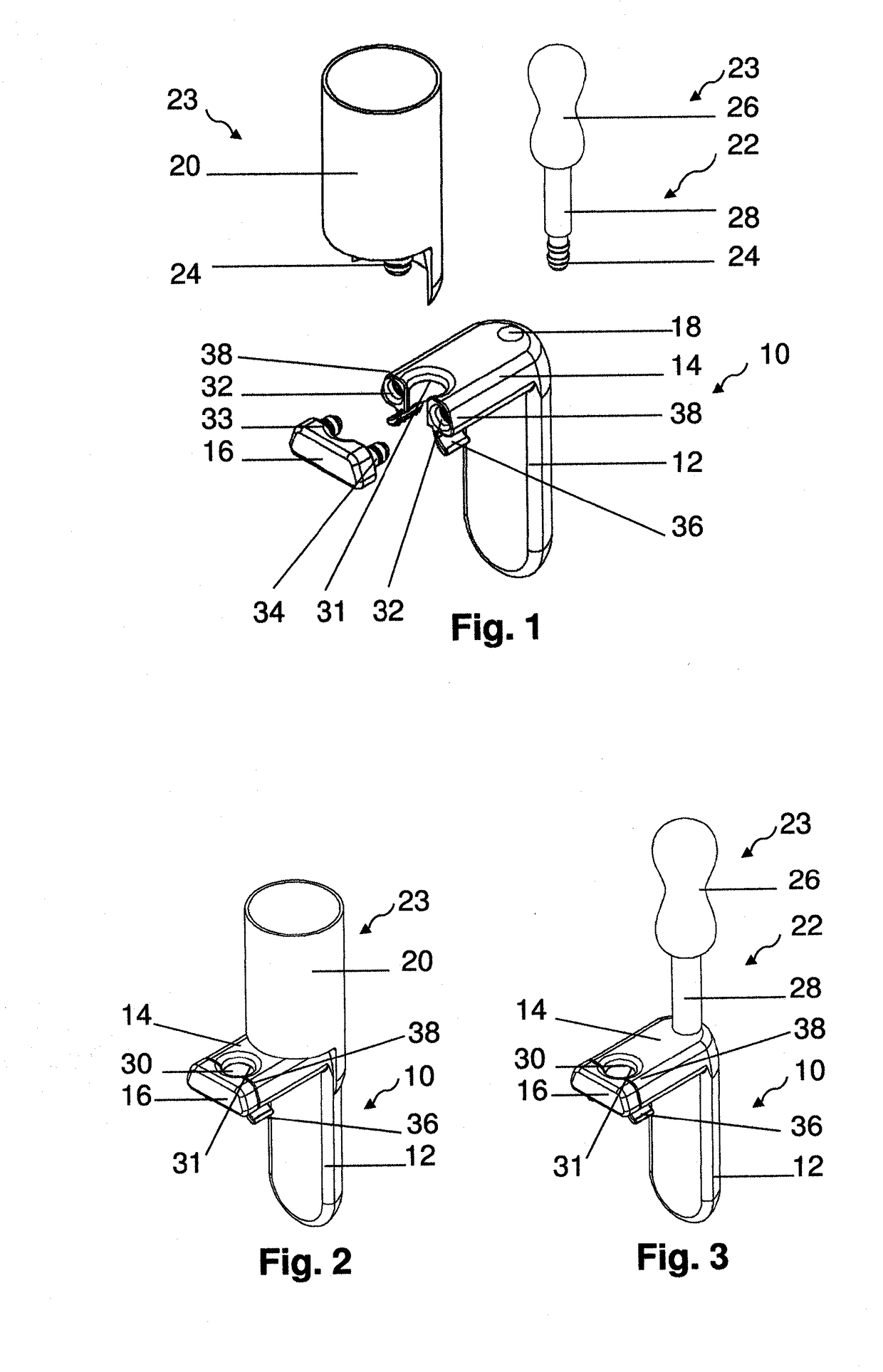A device to assist in self insertion of a catheter tube into the urethral orifice of women
a technology for urethral orifice and catheter tube, which is applied in the field of devices to assist in the insertion of catheter tubes into the urethral orifice of women, can solve the problems of systemic side effects, difficult to pass the catheter, and difficult for most women patients to self-administer bladder instillation, etc., and achieves ease/simplification of the procedure of locating, less discomfort, and easy insertion of catheter tubes
- Summary
- Abstract
- Description
- Claims
- Application Information
AI Technical Summary
Benefits of technology
Problems solved by technology
Method used
Image
Examples
Embodiment Construction
[0041]To describe an embodiment of the present invention of an urethra catheter-applicator device (abbreviated: UCAD) for women for assisting in self-insertion of a catheter tube into the urethra tract, reference is presently made to the figures.
[0042]From FIG. 1 up to and including FIG. 4B, reference is made to the construction of the device of the present invention.
[0043]FIG. 1 illustrates an isometric from-above-and-side view of a UCAD (10) shown in a disassembled configuration. The UCAD (10) is shown is shown in an opened hole configuration with hole closing-bar element (16) (also referred to as: closing element) adjacent to the UCAD (10). Also shown in the figure are two alternative vaginal insertion elements: an insertion-thimble (20) and an insertion rod-handle (22).
[0044]The UCAD (10) and closing element (16) are typically but not necessarily, made of a rigid or semi-rigid material such as, but not limited to silicon, plastic or nylon. The UCAD is typically, but not necessar...
PUM
 Login to View More
Login to View More Abstract
Description
Claims
Application Information
 Login to View More
Login to View More - R&D
- Intellectual Property
- Life Sciences
- Materials
- Tech Scout
- Unparalleled Data Quality
- Higher Quality Content
- 60% Fewer Hallucinations
Browse by: Latest US Patents, China's latest patents, Technical Efficacy Thesaurus, Application Domain, Technology Topic, Popular Technical Reports.
© 2025 PatSnap. All rights reserved.Legal|Privacy policy|Modern Slavery Act Transparency Statement|Sitemap|About US| Contact US: help@patsnap.com



